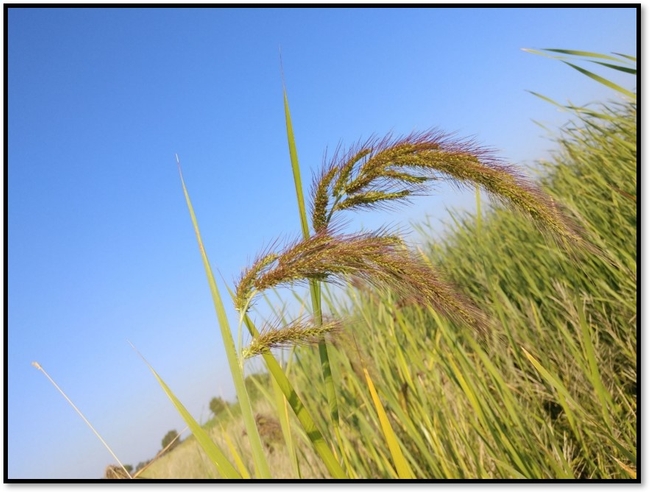
We came up with a preliminary set of characteristics to distinguish this unknown biotype or species (we are unsure if it is a distinct species) from the typical barnyardgrass and late watergrass found in California rice fields. All were characterized by their seed size and awns (Table 1).
|
Preliminary Identification |
Seed Description |
|
Late watergrass |
Large size, no awns |
|
Early watergrass |
Large size, awned (all seeds) |
|
Barnyardgrass |
Small size, variably awned (some seeds have awns, some do not) |
|
New biotype/species (unknown) |
Small size, awned (all seeds) |
In 2018, we collected 8 samples from the field, and used two late watergrass samples from known susceptible populations to use as controls. We conducted a screening in the greenhouse, to see if we could replicate what we were seeing in the field. Field rates of Cerano® (clomazone), Butte® (benzobicyclon+halosulfuron), Granite GR® (penoxsulam), and Bolero® (thiobencarb) were used as the early-season granular applications. Field rates of SuperWham® (propanil), Regiment® (bispyribac-sodium) and Clincher® (cyhalofop) were used to test for the late-season cleanup applications. In the greenhouse, all applications were made at the 1.5 leaf stage of the grass.
Results indicate that 8 of the 8 samples were not controlled (less than 50% by biomass, in comparison to the untreated controls) by Granite GR® or Butte®. 7 of the 8 samples were not controlled by Bolero®, and 6 of the 8 were not controlled by Cerano®. This closely follows what growers were stating had occurred in the field: the watergrass was escaping early-season control, and was then difficult or impossible to control with later-season herbicide applications. SuperWham®, Regiment®, and Clincher® controlled 8 of 8 samples (at least 60% control). However, since the greenhouse application was conducted at an early timing (1.5 leaf stage), it is possible that later applications in the field may be less effective.
For growers, the implications of this preliminary screening are that control of this new biotype/species will need to be prioritized early in the season. Possible treatments (keep in mind that these have not been field-tested and could cause phytotoxicity) could be: a stale seedbed using a non-selective herbicide; pre-plant Abolish® (thiobencarb) followed by Cerano® or Butte® or Granite GR®; Cerano® followed by Butte® or Bolero® or Granite GR®; or Butte® followed by Granite GR® or Bolero®. There is still a strong likelihood that a follow-up application may still be required later in the season, even with these early-season applications.
In 2020, more than 60 watergrass samples were collected from all over the rice-growing region. We will continue working on identification and conduct further herbicide screening this year.
Author - County Director, Sutter and Yuba Counties and CE Rice and Wild Rice Advisor